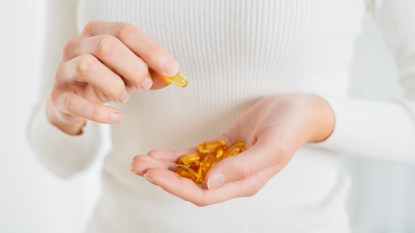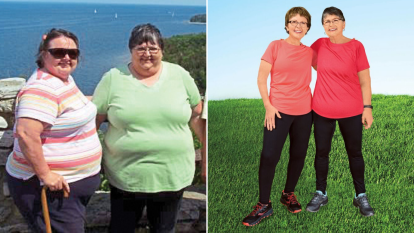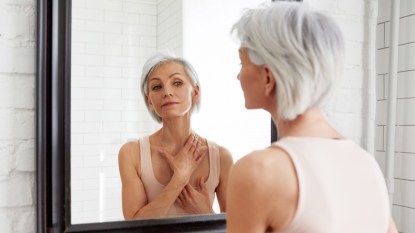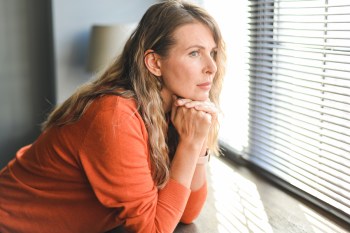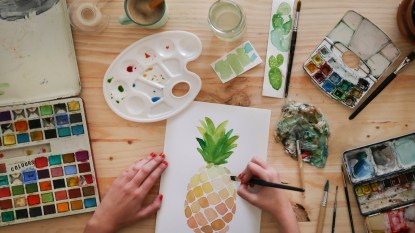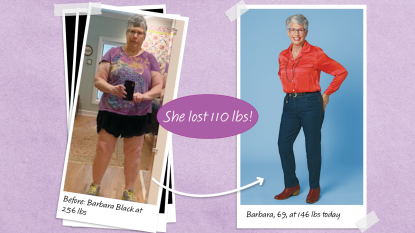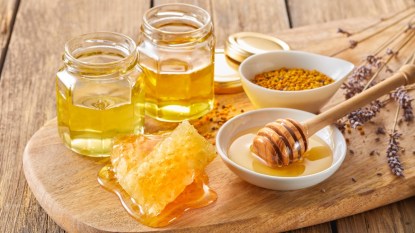Cure a Yeast Infection Without Meds? Yes! Top Gynecologists Explain Which Natural Remedies to Use When
These home remedies work just as well as messy creams — and cost a whole lot less!
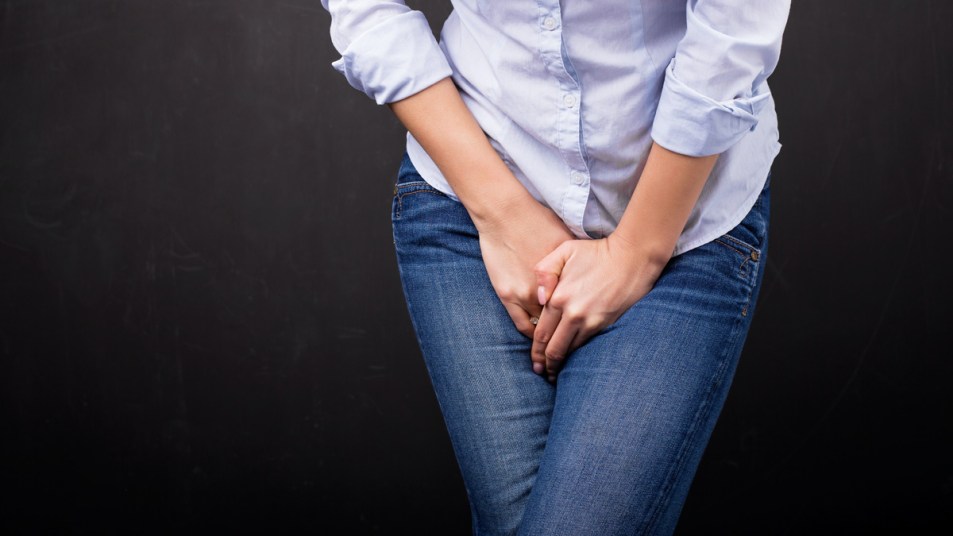
You likely already know that yeast lives naturally on our bodies, along with beneficial bacteria that help keep it in check. But when yeast starts to grow and multiply in excess in the delicate tissues of the vaginal folds, it can trigger a yeast infection. The good news is there are many natural cures for a yeast infection—and one of them could save you a trip to the doctor.
What causes yeast infections?
Infections are most often caused by a strain of yeast known as Candida albicans, which thrives in warm, moist conditions. That’s why yeast infections increase during hot weather and why you’ve always been told never to sit around in a wet bathing suit.
C. albicans can also grow unchecked when your bacterial balance is disrupted, such as when you’re taking a course of antibiotics that knocks out your body’s “good guy” bacteria. When there are fewer good bacteria to keep a lid on yeast levels, yeast can take over and cause the symptoms that most women have come to dread.
You’re also more susceptible to a yeast infection during menopause, thanks to hormone swings that can alter your vaginal pH, explains OB-GYN Laura Corio, MD, author of The Change Before the Change (Buy from Amazon, $18). “Yeast is a normal microbe found in the vagina, but it becomes problematic when its numbers climb,” explains Dr. Corio.
Another trigger: stress. It spurs a rise in the hormone cortisol, which can increase your blood sugar levels and allow yeast that’s already present in your vagina to multiply, explains gynecologist Barbara DePree, MD, founder of MiddlesexMD. In fact, research in the Journal of the Turkish-German Gynecological Association suggests that women with recurrent yeast infections often have levels of cortisol associated with chronic stress.
What are the symptoms of a yeast infection?
The most common symptoms include itching, burning and vaginal discharge. But since these symptoms can mimic those of other vaginal infections, your best first step is picking up an over-the-counter (OTC) yeast infection test (Buy from Walgreens, $15.99). The drugstore kit checks your vaginal pH levels to indicate when an infection might be present.
This testing step is key since only a third of women using at-home yeast infection treatments truly have a yeast infection, cautions Mary Jane Minkin, MD, a clinical professor at Yale University School of Medicine. The rest have bacterial infections or sensitivity to an irritant such as scented soap that can cause similar symptoms, she explains. If you have an overgrowth of bacteria and you treat it with an anti-yeast medication, you’re likely to make the infection worse since there will be fewer yeast to keep the bacteria in check.
Once you know it’s a yeast infection, you’ll want speedy relief. And while OTC antifungal remedies abound, they can cause side effects such as vaginal irritation, burning, itching and even headaches. What’s more, C. albicans strains can become resistant to standard treatments like OTC antifungal creams over time, reveals Dr. DePree.
Alternatively, your doctor can prescribe oral treatments to help clear up the infection. But you’d first need to book an appoint then get the prescription filled, which often ends up being costly and time-consuming.
If you’d prefer to try safe, effective natural cures that works just as well — if not better! — read on for the top five natural cures for a yeast infection.
Natural cures for a yeast infection
If the discomfort is mostly internal, try boric acid suppositories
These inexpensive capsules can be inserted directly into the vagina to provide potent natural relief. “It safely makes the vagina more alkaline to stop yeast overgrowth and cure the infection,” explains Dr. Corio.
Boric acid even targets yeast varieties that are known to become resistant to conventional antifungal treatments like OTC miconazole (also known as Monistat). Boric acid so effective, a Journal of Women’s Health review found boric acid cured up to 100% of women with yeast infections, results on par with prescription medications. Dr. Corio advises using boric acid vaginal suppositories before bed for two weeks to clear up an infection. Note: While boric acid is safe for vaginal use, it may irritate skin for some women. (Click through to see why boric acid is top home remedy for bacterial vaginosis, too.)
Tip: To prevent recurrent yeast infections, continue to place one boric acid capsule in the vagina two nights per week for six to 12 months, advises Dr. DePree.
One to try: AZO Boric Acid Vaginal Suppositories (Buy from Target, $25.49).
If the discomfort is in and around your vaginal lips, smooth on coconut oil
Coconut oil brims with an antifungal fatty acid known as caprylic acid that can penetrate the cell walls of C. albicans, killing it even better than OTC meds, suggests research in the Advanced Pharmaceutical Bulletin. Apply the oil to the vaginal lips and folds three times daily for relief that begins to kick in within 24 hours.
For a stubborn infection, try tea tree oil suppositories
To stop a stubborn, hard-to-treat yeast infection flare up in its tracks, consider tea tree oil. A study in Brazilian Oral Research found tea tree oil prevents the formation of biofilms, or protective “cocoons” of bacteria that form around C. albicans so it can grow.
Researchers found the oil’s terpinene-4-ol eliminates up to 100% of candida biofilms, and it was effective against yeast strains resistant to conventional treatments. Simply insert a tea tree oil suppository into the vagina once daily for six days. (Click through to learn more strategies for a yeast infection that won’t go away.)
One to try: Tea Tree Therapy Vaginal Suppositories (Buy from Amazon, $11.25).
How to prevent future yeast infections
Boost your ‘good guys’
As many as 9 million women in America are dealing with recurrent yeast infections. To the rescue: probiotics. One of the most effective ways to both prevent and fight yeast infections is through what Dr. Minkin calls a “microbiome approach.”
“It’s important for women to take a balanced probiotic capsule,” she advises. “This ‘good guy’ bacteria will help colonize the vagina, creating acids that ward off yeast.”
For best benefits, opt for a probiotic that includes a strain known as Lactobacillus rhamnosus. A study in BMC Infectious Diseases found that women who took this probiotic strain daily to treat their recurrent flare ups were infection-free for an entire year afterward.
One to try: NOW Women’s Probiotic (Buy from Walmart.com, $17.45).
Eat more of these foods
Enjoying foods rich in vitamin B-3, such as chicken, beef, fish and brown rice, can reduce your body’s number of infection-causing C. albicans cells by up to 67%, research in Nature Medicine reveals. This helps keep levels of harmful yeast in check, blocking them from multiplying and causing an infection. Just one serving (about 3 ½ oz.) of chicken contains 69% of the B-3 you need daily.
Enjoy relaxing baking soda baths
You can turn a soothing soak into a powerful yeast infection preventative simply by adding ¼ cup of baking soda to the water and soaking for 30 minutes up to twice a week. The pantry staple (also known as sodium bicarbonate) restores vaginal pH balance.
This helps kill existing C. albicans cells, plus creates an environment where yeast can’t grow in the future, according to research in the European Journal of Pharmaceutical Science.
This content is not a substitute for professional medical advice or diagnosis. Always consult your physician before pursuing any treatment plan.
A version of this article originally appeared in our print magazine, Woman’s World.


